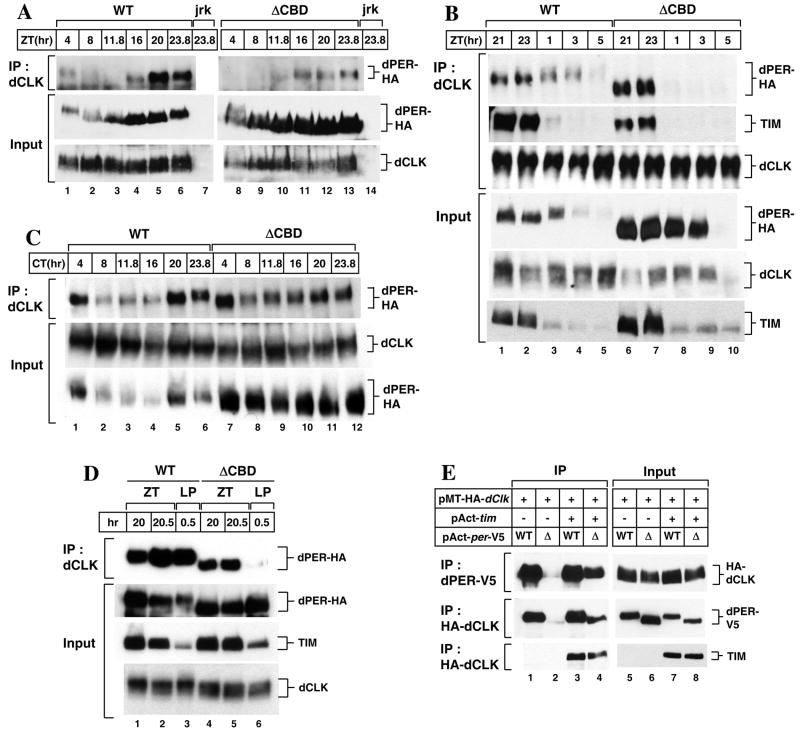Figure 5.
dPER(ΔCBD) can interact with dCLK in the presence of TIM. (A-C) Adult flies of the indicated genotypes [above the panels; jrk, dClkjrk(Allada et al., 1998)] were collected at the indicated times during LD cycle (A, B) or first day of DD (C). (D) Adult flies of the indicated genotypes were treated with light (LP) or maintained in the dark (ZT) for 30 min starting at ZT20. Head extracts were prepared and either directly analyzed by immunoblotting (Input) or subjected to immunoprecipitation (IP). IP was performed in the presence of anti-dCLK antibodies, and immune complexes analyzed for dPER, TIM, or dCLK, as indicated (right of panels). (E) S2 cells were transiently transfected with pAct-dper-V5 or pAct-dperΔCBD-V5 in combination with pMT-HA-dClk. In addition, some cells were additionally transfected with pAct-tim (+). Exogenous expression of dCLK was induced 24 hr after transfection by adding 500 μM CuSO4 to the medium. Cells were harvested 24 hr after induction, and protein extracts were directly analyzed by immunoblotting (Input) or subjected to immunoprecipitation (IP). The protein targeted by the antibody added during IP is indicated (left of panel) and immune complexes analyzed for the indicated protein (right of panel).

